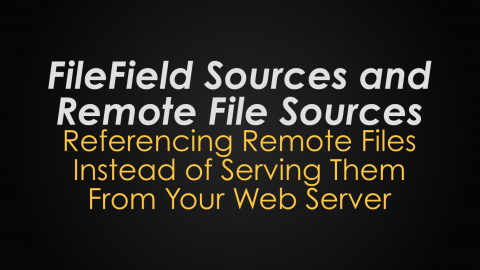Final videos in the FileField Sources series | Modules Unraveled

This week, the final videos in the FileField Sources series have been released! Check them out below.
Pasting an Image From the Clipboard
In this video, we will paste an image from our clipboard into the filefield.
Referencing an Existing File
This time, we'll simply reference an existing file, which means that if we need to create multiple nodes that each need the same file attached, we don't have to upload the same file multiple times (once for each node) and bloat our files directory. We can upload it once, and reference it on the rest.
Selecting Large Files Like Those Uploaded Via FTP
The File Attach option is particularly useful when dealing with large files. It allows you to upload a file through other means (such as FTP) and then reference that file through the file field. The reason this is so useful is because many php installations limit the file size that can be uploaded through the browser as well as the length of time the system should process an upload. Meaning, if it is too large, and takes too long, the system will time out, and the file will not get uploaded. In some instances, you can increase these limits to a point, but many hosts do not allow you to exceed a specified limit. So it's useful to have another option.
Referencing Remote Files Instead of Serving Them From Your Web Server
The Remote File Source module allows you to select files that are on an external server, without having to save them to your Drupal files directory. This can be particularly useful for files that update regularly (like the master branch of a Drupal module) or for files that you just simply don't want to serve from your web server. In this example, I'll select the latest version of the FileField Sources zip file on drupal.org.


Comments
Users
A how-to for setting up the user folders so they all have their own personal directory would be nice.
Good series - to the point